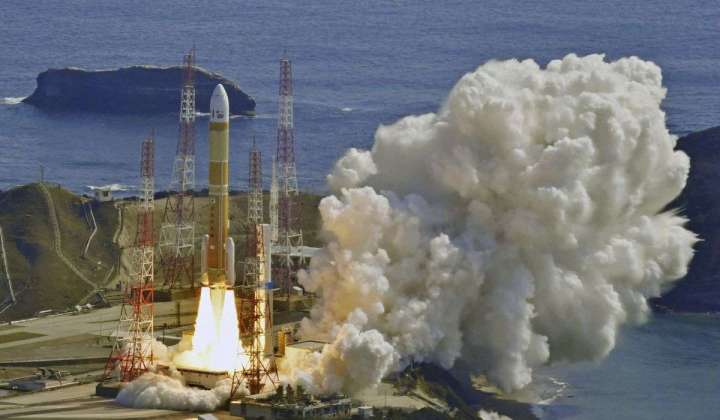Japanese space agency destroys H3 rocket minutes after launch when 2nd stage doesn’t ignite

The Japanese Aerospace Exploration Agency had to destroy its H3 rocket just minutes after launch Tuesday when the rocket’s second stage failed to ignite.
The H3 rocket was carrying an advanced land observation satellite, with plans to use the satellite, lost along with the rocket, to collect data for disaster response and cartography. Infrared sensors on the orbital object would have been able to detect incoming missiles.
The H3 rocket launched from the Tanegashima Space Center at the southern tip of the Japanese island of Kyushu at 10:37 a.m. local time.
When it became clear to mission control that the second stage ignition had failed and that achieving orbit was no longer feasible, JAXA sent the destruction order.
The destroyed rocket and its payload crashed into the Pacific Ocean east of the Philippines.
“We deeply apologize for not being able to meet the expectations of everyone involved with the on-board satellite, the local community and the general public,” JAXA wrote in an announcement Tuesday, according to a computer translation.
An investigation into the cause of the failure to ignite has been opened by the agency. Tuesday’s travails were not the first suffered by the H3 mission. A launch attempt on Feb. 17 was aborted after an anomaly was found in the ignition system for the first stage of the rocket, stopping it from launching altogether.
JAXA continues to eye the international satellite market, even as it begins its look into why the H3 rocket failed.
Japanese rocket experts have been left baffled as to why the second stage failed, given its similarities to its predecessor, the H-2A.
Both rockets were designed by JAXA and Mitsubishi Heavy Industries, along with other parties. The H-2A has completed 46 missions and is due to be retired after its 50th launch.






